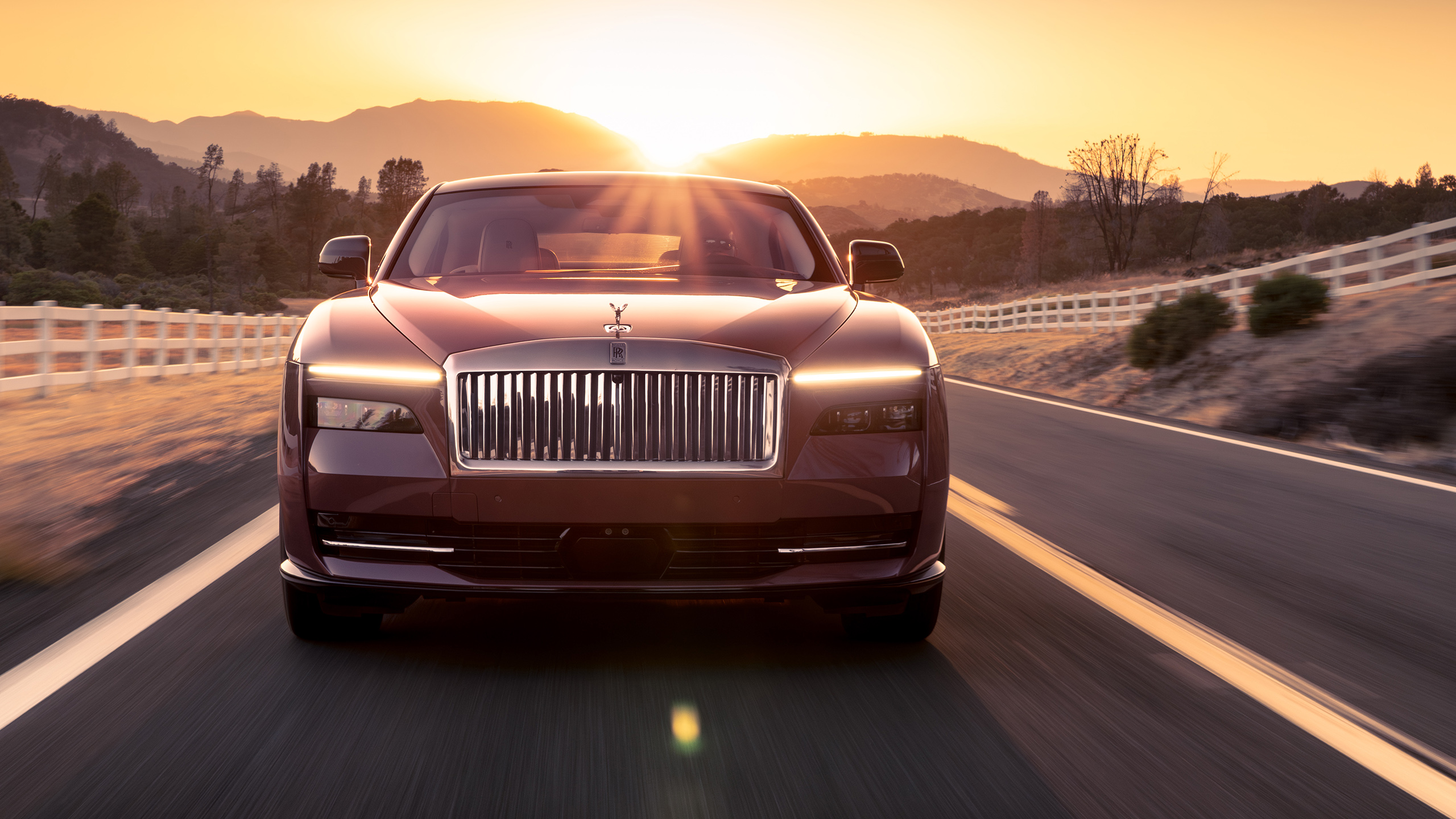We may earn revenue from the products available on this page and participate in affiliate programs. Learn more ›
In the lavishly opulent lexicon of Rolls-Royce, there’s a driving technique called the “champagne stop” – and no, it’s not just the name for swinging by the liquor store to grab a couple bottles of Veuve on the way to a Monterey Car Week party. The champagne stop is a legit braking method the automaker teaches at its White Glove chauffeur training program, and it’s a quintessential part of the Rolls-Royce experience.
According to Dr. Mihiar Ayoubi, Rolls-Royce’s director of engineering, “Our chauffeurs are taught to brake in a way that our patron wouldn’t spend one drop of champagne from his glass.” (Real quick: Imagine getting fired over that.) Drivers learn how to progressively apply stopping power and then slowly come off the brake as the car nears 0 mph. In terms of vehicle engineering, Ayoubi said this equates to “a long travel of the brake pedal in order to be precise while decelerating and coming to the point where you aimed at.”


In cars with traditional internal combustion engines, linear brake force is usually pretty easy to apply. But in electric vehicles, like the new 2024 Rolls-Royce Spectre, it’s not so simple. EVs rely on strong regenerative energy to boost efficiency, often making the brakes kind of tricky to modulate, especially at the point where a car’s mechanical friction brakes take over from the electronic recuperation. That’s why, in an effort to keep the champagne stop intact, the Spectre’s standard drive mode doesn’t rely on regenerative braking at all.
2024 Rolls-Royce Spectre Specs
- Base price: $420,000
- Powertrain: Two permanent-magnet synchronous electric motors | single-speed transmission | all-wheel drive
- Horsepower: 577 hp
- Torque: 664 lb-ft
- 0-60 mph: 4.4 seconds
- Curb weight: 6,372 lbs
- EPA Range: TBD, 290 miles estimated
“We will never, ever have a brake pedal feeling where you are aggressively braking,” Ayoubi explained at the Spectre’s global media drive last month. “Our customers have multiple Rolls-Royces in their garage and they are expecting the same behavior of Spectre as the other cars.”
But hang on, that doesn’t mean regen is completely absent from the Spectre. Press the “B” button on the Spectre’s column gear shifter and the powertrain will dial in regenerative braking, allowing for “the one-pedal drive that I very much love,” Ayoubi said. Yet he also knows that “we can’t force customers” to use one-pedal driving. That’s why, even in the B setting, the Spectre is tuned with the champagne stop in mind.


“The car won’t dive in any situation,” Ayoubi explained. And you know? He’s right. Driving around California’s Napa Valley, I couldn’t get the Spectre to exhibit any uncouth braking behavior. On several occasions, I’d floor it from a stop in B mode and then quickly lift my foot off the throttle. No unsettling body motions, no pronounced nose dive. Had my passenger actually been sipping champagne – not unheard of in Napa, you know – he wouldn’t have spilled it and stained my pink test car’s hella fancy interior. Thank god.
A lot of credit for this surefooted and splash-free braking goes to the Spectre’s standard active chassis tech that quells body motions, not to mention the low center of gravity afforded by the massive 102-kilowatt-hour lithium-ion battery pack. Braking aside, the Spectre is designed to always deliver Rolls-Royce’s signature wafty ride. You won’t spill any bubbly while stopping, but it shouldn’t slosh around while accelerating or turning, either.
On that note, the Spectre’s off-the-line acceleration differs from many other EVs. Despite having 577 horsepower and 664 pound-feet of torque, the Spectre doesn’t rocket away from a stop with the instant slam-you-in-the-back punch typically associated with EVs – and not just because this behemoth weighs 6,372 pounds. Rolls-Royce says the sprint to 60 mph takes 4.4 seconds, but it feels much more leisurely than that. According to Ayoubi, that, too, is intentional.




Ayoubi explained that, with Rolls-Royce’s traditional twin-turbo V12 gas engine, “There’s a huge delay and lag between creating the moment the torque [is produced] and delivering the torque to the wheels.” So rather than having immediate torque thrust from the Spectre’s electric powertrain, “We wanted to design a delay to this instant dynamic system in order to deliver waftable acceleration,” Ayoubi said. “The driver shouldn’t feel the mass of the car.”
In every measure, the Spectre is delightful, from the way it looks, to the way it drives, to the way you feel sitting inside, enveloped by the coupe’s dramatically high beltline. Rolls-Royce estimates the Spectre has a driving range of 310 to 330 miles based on the notoriously optimistic European WLTP cycle, so expect a US-spec EPA number somewhere between 280 and 300.
Pricing for the Spectre starts at $420,000 in the US, but good luck actually seeing one of these on the road with a sticker under $500,000, considering the way customers usually option their cars. Unfortunately for them, champagne isn’t included.

Steven Ewing is an experienced automotive journalist with bylines in CNET, Motor1, Autoblog, Top Gear, and more. Got a tip? Send us a note: tips@thedrive.com

